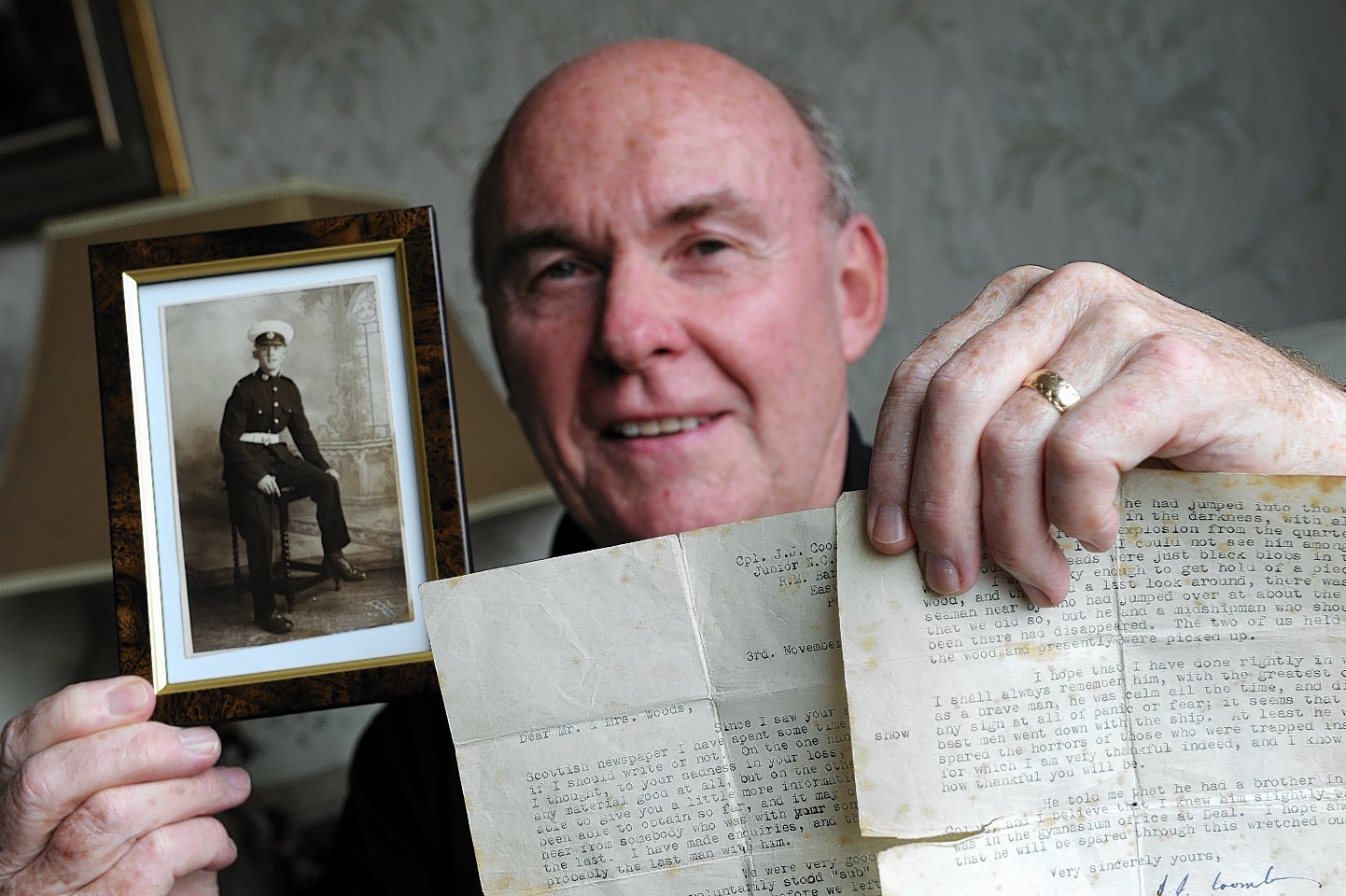Two families connected by a wartime tragedy have found each other for the first time in 75 years.
Portknockie sailor William John Wood was one of 834 who lost his life when the Royal Oak was torpedoed by a German U-boat on October 14, 1939.
But unlike many of his crew mates, who had been asleep below deck when the warship was hit, the 21-year-old managed to jump overboard.
Although he never made it to shore, Mr Wood’s family took comfort in the fact he was not trapped inside the ship, thanks to a letter sent to them by his captain John Joseph Coombes two weeks after the tragedy.
Signing his note simply as J J Coombes, the captain told Mr Wood’s shoemaker father, James, that he had been one of the last men with him.
Referring to Mr Wood by his nickname of Timber, the captain told the family he had joined him on the quarterdeck after the first explosion, which was quickly followed by a second and third.
He wrote: “Fumes and smoke swept over us, and it was not possible to see clearly but even though my impressions of that time are hazy, I think that I saw him just ahead of me running to the gangway as the ship listed over; by the time that I got there myself and had removed my overcoat, he had jumped into the water.
“I jumped in myself, but in the darkness, with all the shouting, and a fourth explosion from the quarterdeck which we had just left, I could not see him among the many around me, heads were just black blobs in the water.”
Capt Coombes said he would always remember Mr Wood with the “greatest of respect as a brave man”.
He added: “At least he was spared the horror of those who were trapped inside, for which I am very thankful indeed, and I know just how thankful you will be.”
Mr Wood’s nephew Jim discovered the letter about five years ago and although he thought about trying to trace the captain, never did.
But on Sunday, his daughter Nicola Bartlett posted the note and a photograph of her great-uncle online – and within 20 minutes, the captain’s daughter got in touch.
Mr Wood, 67, of Westhill, said: “She had no idea about the letter.
“She just thanked us and said it was nice the family has kept the letter all this time. She’s forwarded it to their relatives and they’re all delighted because they didn’t know anything about their father.”
Capt Coombes – who was known as Ian – was traumatised by the sinking of the Royal Oak and was unable to talk about the tragedy with his family. He did not immediately return to sea, instead working as a training instructor at a barracks.
In December 1940, he was sent back to sea. He was killed in Crete in May 1941, after HMS Hereward took a direct hit. He left behind three children, Diana, Mike and Jane.
Posting online, his son wrote: “What a moving and considerate letter for my father to have written, and although I was too young to remember him it is in keeping with all I know of him.
“How touching that the letter has been kept for all those years, and how apt that it should have come to light just on the 75th anniversary of that dreadful day.”
